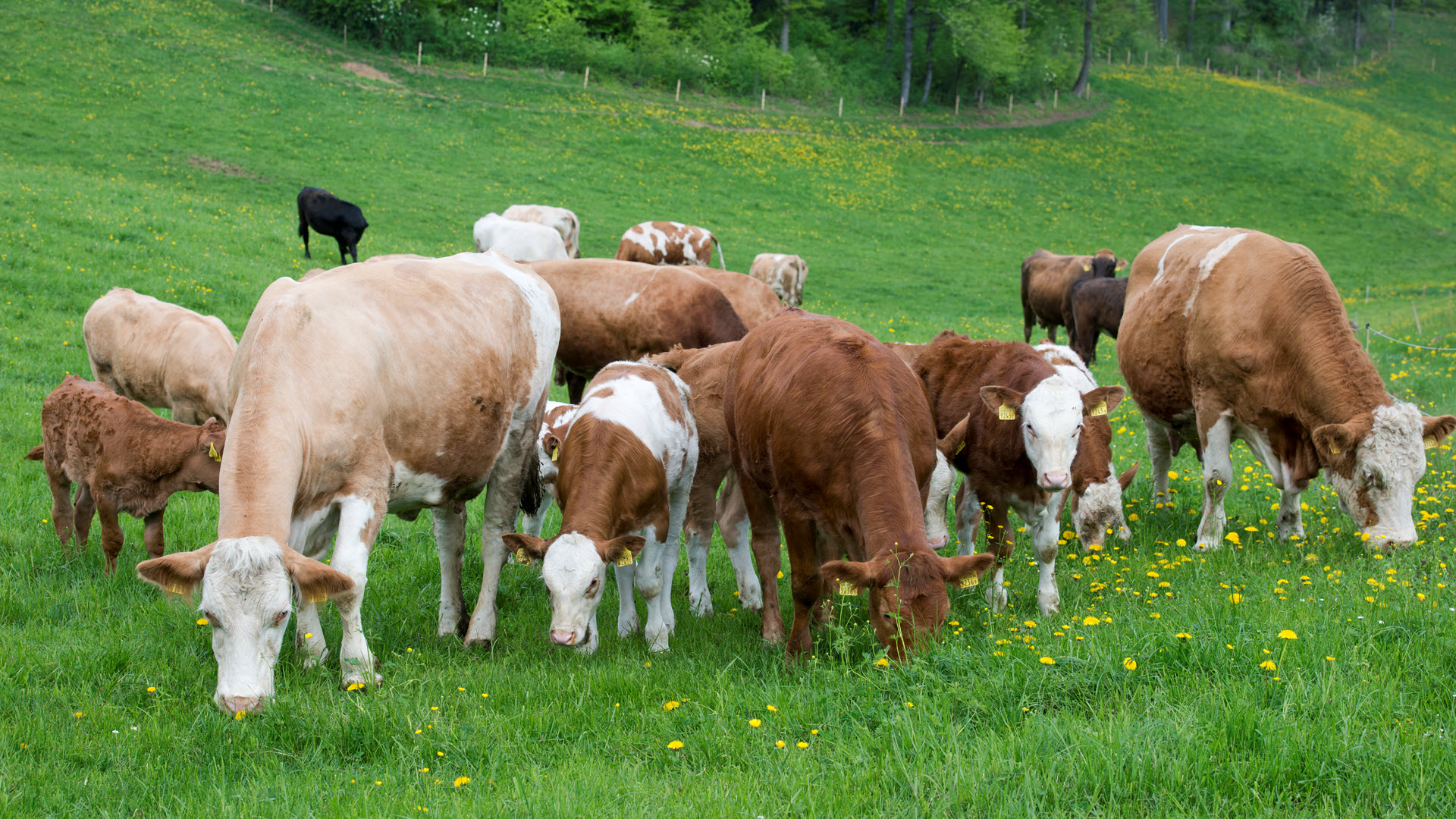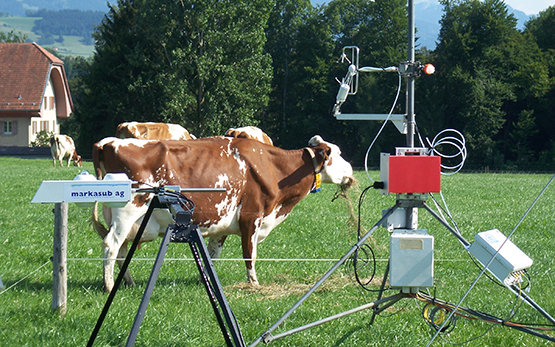Agricultural production generates sizeable methane and nitrous oxide emissions. Nitrous oxide is not only a potent greenhouse gas, but also contributes to the depletion of the stratospheric ozone layer.
Essentially, greenhouse gas emissions are calculated by multiplying an activity data (e.g. the excreted manure nitrogen of a particular animal category) by an emission factor that defines the amount of greenhouse gas released into the atmosphere per amount of activity.
In order to compare the climate effect of different greenhouse gases, further factors besides the quantities emitted must be taken into consideration. Different greenhouse gases absorb radiation in different ranges of the wavelength spectrum. That is why, for example, a tonne of methane in the atmosphere has a greater thermal effect than a tonne of carbon dioxide. In addition, the lifetime of the greenhouse gas in the atmosphere must be taken into account. The calculated methane and nitrous oxide emissions are thus ultimately converted into so-called CO2-equivalents to facilitate comparison of the different greenhouse gases. Here, a time horizon for the climatic effects of 100 years is chosen as standard.







